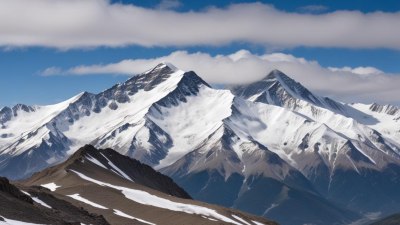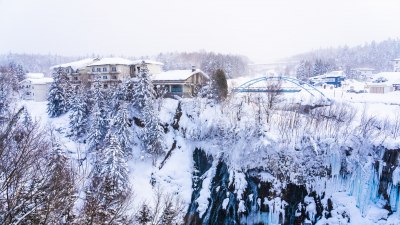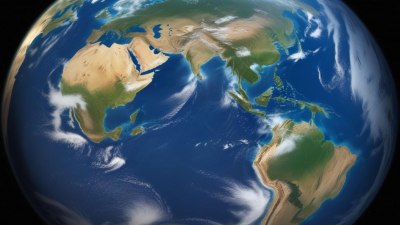How Altitude Affects Weather Conditions
Explore the impact of altitude on weather patterns, including temperature, precipitation and more.

This image was created with the assistance of Freepik
Altitude, defined as the height above sea level, plays a critical role in determining weather conditions. As we ascend in elevation, we encounter a gradual change in atmospheric pressure, temperature, and moisture content. These factors collectively shape the climate experienced in different regions. Understanding how altitude affects weather is key for meteorologists, climbers, and anyone interested in the dynamics of our atmosphere.
The Basics of Altitude and Weather
The Earth’s atmosphere is composed of several layers, each with unique characteristics that influence weather. The troposphere, the lowest layer, is where most weather phenomena occur, and its thickness varies with altitude. At sea level, the atmosphere is denser, but as one rises, the air becomes thinner, leading to a decrease in temperature. This phenomenon is commonly referred to as the lapse rate, typically around 6.5 degrees Celsius per kilometer of ascent.
This drop in temperature can significantly impact the weather. For instance, mountain ranges often exhibit cooler climates at their peaks than the valleys below. This temperature differential can create microclimates, where different ecosystems flourish due to varying conditions. Flora and fauna oftenadapt to these localized variations, highlighting the interplay between altitude and weather.
Temperature Variations
Temperature is perhaps the most noticeable difference that altitude brings to weather conditions. Higher elevations typically experience cooler temperatures, which can affect everything from the type of precipitation to the growing seasons of plants. In high-altitude regions, the cooler climate often leads to snow-capped peaks, even in warm seasons, which can have profound effects on the local ecosystem.
For example, regions like the Rocky Mountains in the United States receive significant snowfall during winter months due to their altitude. The cooler temperatures at higher altitudes allow for snow to accumulate, influencing local rivers and lakes as the snow melts in warmer months. Conversely, low-altitude regions often experience warmer conditions, leading to rain rather than snow during various seasons.
Precipitation and Altitude
Altitude also significantly impacts precipitation patterns. In many cases, mountainous regions receive more precipitation than surrounding lowlands due to orographic lift. As moist air rises along the windward side of a mountain range, it cools and condenses to form clouds, resulting in increased rainfall. This phenomenon can create lush environments on one side of the range while leaving the leeward side arid and dry, a process known as rain shadow effect.
This variation in precipitation is crucial for agriculture and water resources management. Regions that lie in rain shadows often rely on irrigation to support farming activities, whereas the windward sides flourish with diverse vegetation due to the ample moisture available. This difference can be stark; for instance, the eastern slopes of the Sierra Nevada range receive substantial rainfall, while the western slopes can be significantly drier.
The Role of Elevation in Storm Formation
Storms also behave differently at various altitudes. Higher altitudes can lead to the formation of thunderstorms that are often more intense than those found at lower elevations. This intensity is due to the rapid cooling of air at higher elevations, leading to the condensation of moisture at greater rates and the potential for severe weather events, including hail and lightning.
Additionally, the orographic lift associated with mountainous terrain fosters the development of localized storms. These storms may be short-lived but can deliver drastic weather changes in a brief time period. Observers have noted that regions located at higher altitudes frequently experience sudden shifts in weather, as storms can form rapidly due to the favorable conditions created by elevation.
Effects on Humidity and Wind Patterns
Humidity levels are also influenced by altitude. Generally, as elevation increases, the amount of water vapor present in the atmosphere decreases, resulting in lower humidity levels. This reduction in humidity can lead to an increase in evaporation rates, particularly in warmer mountainous regions. Consequently, ecosystems at higher altitudes may display adaptive strategies, such as drought-resistant plant species, that can survive in these conditions.
Wind patterns are another area where altitude plays a fundamental role. At higher elevations, particularly above tree lines in mountain ranges, winds can be more powerful and persistent. These high-altitude winds may transport moisture and influence weather systems far beyond the immediate area. For example, strong winds at high altitudes can contribute to the formation of storm systems that impact vast geographical regions.
Climate Zones and Altitude
The interaction between altitude and weather is also key in determining climate zones. For instance, the Köppen climate classification system recognizes the influence of altitude in defining climatic boundaries. As one ascends in a given latitude, climates transition from tropical to temperate and then to polar in relatively short distances, demonstrating the significance of elevation in shaping long-term climate conditions.
One classic example of this phenomenon is found in the Andes mountain range where one can observe a range of climates from the lush tropical environments of the Amazon basin to the glacial conditions found at their summits. Such climate variation highlights the critical role altitude plays in dictating not only weather conditions but entire ecosystems.
Human Impact and Adaptation
Humans living at high altitudes have adapted their lifestyles to cope with lower temperatures, decreased oxygen levels, and variable weather conditions. For instance, communities such as those in the Tibetan Plateau have developed unique agricultural practices suited to their climatic conditions, growing crops that can withstand the harsher environment.
Moreover, the infrastructure in high-altitude areas is often designed to withstand intense weather variations, ranging from heavy snowfall to rapid temperature shifts. This adaptation is crucial for maintaining essential services such as transportation and healthcare in these challenging environments.
In conclusion, the impact of altitude on weather conditions is a multidimensional aspect that influences temperature, precipitation, humidity, wind patterns, and even the development of storm systems. As we continue to study and understand these dynamics, we can better prepare for and adapt to the weather conditions unique to various elevations. Knowledge about altitude's effects on weather will remain crucial as we navigate the challenges posed by our changing climate, helping us mitigate risks and adapt to evolving environmental conditions.











